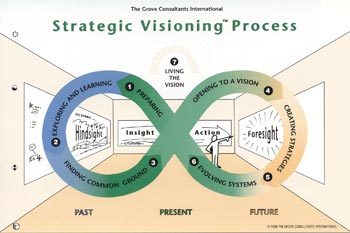
I don’t know how many of you have ever played golf. I personally love the sport.
It’s just you and the course.
It’s also the kind of activity that will really mess with your head if you let it. Golf is all about positive thinking.
In golf, like everything in life, it is important to visualize your success. Good golfers have a routine that includes standing behind the ball. The really good golfers aren’t just lining up their shot; they’re visualizing their shot. They’re picturing, in their mind, the ball’s flight through the air, where it will land, and the course it will take prior to coming to rest.
This is positive thinking at work. The positive thinking book, The Secret, is based on the belief of the law of attraction, which says that thoughts can change a person’s life directly. If you learn to harness the power of positive thoughts, you’ll attract more positive circumstances.
Misery Loves Company – Like Attracts Like
We spend too little time appreciating our joy and the joy of others. We tend to believe that thinking positively and being happy is not a habit. You need to rewire your brain with the power of positive thinking. Gratitude makes us happier. It floods our brains with dopamine, the chemical that has the potential to drown out our negative thoughts and anxious feelings we carry throughout the day. Gratitude invokes the law of attraction.
Throughout this week, I encourage you to take the opportunity to show your gratitude to others at least once a day. Practice your own positive thinking and visualize your week of encouraging the success of others every day. Whether it’s your family, friends, or co-workers, make an effort to recognize them for what they do.

 Leadership is a dying art in the world today. The great leaders of the past are found few-and-far between these days. There are some that have been fairly successful that have rose to an iconic status, but have they been truly great leaders or just really successful at running something?
Leadership is a dying art in the world today. The great leaders of the past are found few-and-far between these days. There are some that have been fairly successful that have rose to an iconic status, but have they been truly great leaders or just really successful at running something?


 Leadership is a dying art in the world today. The great leaders of the past, George Washington, Winston Churchill, Alexander the Great, Martin Luther King, even Adolph Hitler, are found few-and-far between these days. There are some that have been fairly successful, like Steve Jobs for instance, that have rose to an iconic status, but have they been truly great leaders or just really successful at running something?
Leadership is a dying art in the world today. The great leaders of the past, George Washington, Winston Churchill, Alexander the Great, Martin Luther King, even Adolph Hitler, are found few-and-far between these days. There are some that have been fairly successful, like Steve Jobs for instance, that have rose to an iconic status, but have they been truly great leaders or just really successful at running something? Start with a Strategic Mindset.
Start with a Strategic Mindset. Harness the Power of Positive Thinking.
Harness the Power of Positive Thinking. Establishing Key Interpersonal Skills.
Establishing Key Interpersonal Skills. Developing a Personal Business Focus.
Developing a Personal Business Focus. Your Health and the Leader Within You.
Your Health and the Leader Within You. Volunteerism — The Personal Training Ground for Personal Development.
Volunteerism — The Personal Training Ground for Personal Development.